
Reading & Resources
School Administrator, November 2020
Book Reviews
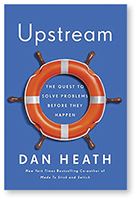
Upstream: The Quest to Solve Problems Before They Happen
by Dan Heath, Simon & Schuster, New York, N.Y., 2020, 320 pp., $30 hardcover
Upstream: The Quest to Solve Problems Before They Happen by Dan Heath outlines the barriers and solutions to preventing problems. “My goal,” he writes, “is to convince you that we should shift more of our energies upstream.”
Heath provides dozens of positive examples, demonstrating that dramatic success is within reach: from saving lives through children’s car seats to ending gang violence. From reducing homelessness to solving environmental problems. Along the way he suggests following the principles of ownership, urgency and agency.
Educators will resonate with solutions such as Heath’s suggestions to hire the right people, unpack the system, find leverage points and measure progress. The stories in
Upstream provide case studies that can be mined for transferrable ideas.
Improving Chicago Public Schools’ graduation rate, for example, hinged on 9th grade success. If 9th grade students completed five courses including either language arts or math, they had an 80 percent chance of graduating on time. The district examined root causes of student dropout: changed teacher assignments, revised discipline policies, and worked on attendance. Most importantly, the Freshman Success Team worked together to tear down the barriers preventing student success. Over a 10-year period, Chicago Public Schools increased graduations by 30,000 students.
For success in the social sector, Heath writes, leaders need to shift from a mind-set of “scaling specific programs faithfully to owning and adapting as needed to achieve results.”
Upstream provides hope and practical advice for all those aiming to improve outcomes for public schools: teachers, principals, district leaders and parents. This is a fun book to read and will give the reader many examples of problem prevention. In addition, the stories will provide encouragement and can-do ideas for those who are ready to go
upstream to solve problems before they happen.
Reviewed by Larry L. Nyland, retired superintendent, Seattle, Wash.
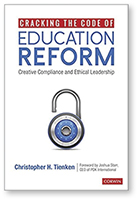 Cracking the Code of Education Reform: Creative Compliance and Ethical Leadership
Cracking the Code of Education Reform: Creative Compliance and Ethical Leadership
by Christopher H. Tienken, Corwin, Thousand Oaks, Calif., 2020, 155 pp. with index, $34.95 softcover
Mandates designed to reform schools and improve student performance are ubiquitous in preK-12 education. In
Cracking the Code of Education Reform: Creative Compliance and Ethical Leadership, Dr. Christopher Tienken uses his expertise to encourage school and system leaders to closely examine and critique reform initiatives so they can implement such measures in a calculated and ethical manner that aligns with evidence-based practices.
The book offers a framework for evaluating reform mandates and suggests strategies for leaders to use when they believe a mandate is not aligned with researched practices or may be harmful to students. The author, an associate professor of leadership at Seton Hall University and editor of the Kappa Delta Pi Record, certainly recognizes that compliance is essential for school and system leaders. However, he offers strategies that may help leaders balance the best interests of students when reform mandates are not aligned with evidence-based practices.
Several reform case studies are provided to illustrate how the decision-making framework can be applied. These include the definition of rigor for curricular standards, use of standardized test scores, and merit pay.
Throughout the book, Tienken emphasizes that reform efforts are not ill-intentioned nor necessarily all bad. He is not endorsing non-compliance, but rather offers suggestions for leaders to consider as they implement reform initiatives or work to advocate for changes to reform mandates.
The book offers several ideas that prompt reflection by school and system leaders as we navigate the demands of accountability and the needs of our 21st century learners.
Reviewed by Theresa Alban, superintendent, Frederick, Md.
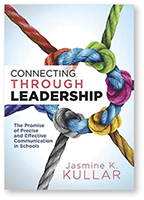
Connecting Through Leadership: The Promise of Precise and Effective Communication in Schools
By Jasmine K. Kullar, Solution Tree Press, Bloomington, Ind., 2020, 145 pp. with index, $31.95 softcover
In Connecting Through Leadership: The Promise of Precise and Effective Communication in School, Dr. Jasmine Kullar, an assistant superintendent in Cobb County, Ga., explores practical ways to build the communication skills necessary for successful leadership.
Kullar focuses on adapting communication efforts for presentations, meetings, tough conversations and writing. She also describes how body language may enhance or hinder communication. Each communication form is examined in a chapter that includes practical, ready-to-apply strategies for school leaders. And each chapter includes a detailed, reproducible template that will immediately be useful to assist busy administrators improve their skills.
While the context used in Connecting Through Leadership is school level leadership, the tools outlined are directly applicable to superintendents and central office leaders. For example, Kullar outlines the way a tough conversation might be structured using a clear beginning, a thoughtful middle explanation and strong conclusion that identifies improvement or corrective actions. Administrators often face these conversations and will benefit from the thoughtful structure Kullar describes.
An additional concept included in the chapter on tough conversations applies to each of the other communication areas: take time to help your colleagues learn to resolve issues before they come to you. An effective educational team will learn to apply effective communication skills in all its forms to enhance students and their learning.
Kullar wisely identifies the challenges with written communication, especially e-mail messages. She advises leaders to stay concise and use a phone call or a meeting to examine issues that require in-depth exploration rather than sending a long e-mail. Perhaps the most valuable advice she provides is to “never use email to communicate anything that you do not want to go public” (p. 89).
Wise leaders will find that Kullar’s communication guidance provides helpful structure and counsel worth reviewing and applying throughout the school system.
Reviewed by Brian L. Benzel, retired superintendent, Redmond, Wash.
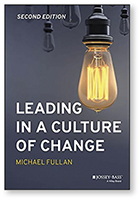
Leading in a Culture of Change (2nd edition)
by Michael Fullan, Jossey-Bass, Hoboken, N.J., 2020, 179 pp. with index, $29.95, hardcover
Though Michael Fullan’s classic educational leadership book Leading in a Culture of Change debuted in 2001, the recently released second edition maintains the first iteration’s relevance. Fullan has enjoyed a distinguished career as an educational thought leader in many capacities in Canada and is currently the Global Leadership Director for New Pedagogies for Deep Learning.
The five principles of the first edition were moral purpose, understanding change, relationships, knowledge building and coherence making. As Fullan asserts in the introduction, the five principles are still necessary and relevant in today’s world. But the second edition features two decades of additional research, placing the complexities of leadership into the context of contemporary global challenges, such as climate change and growing inequalities.
Important and substantial differences include an update to the second principle — Nuance: Understanding Change — which draws from his 2018 book, Nuance: Why Some Leaders Succeed and Others Fail, and the fourth principle, which is now Knowledge Building and Deep Learning and emphasizes principles from his 2017 book with Joanne Quinn and Joanne McEachen, Deep Learning: Engage the World, Change the World. Additionally, the concept of Coherence Making is more deeply explored as the initial concept evolved into a 2016 book of its own, Coherence: The Right Drivers in Action for Schools, Districts and Systems, also with Quinn.
The book serves as a solid overview of the current state of Fullan’s work. Emerging leaders will find the information in the second edition meaningful, practical, and easily accessible.
Fullan admits to being more skeptical about the future and less certain that leaders can pull off what is being asked of them than he was 20 years ago. However, he is also more passionate about the importance of quality leadership than ever before.
Reviewed by David Moyer, superintendent, Elmhurst, Ill.
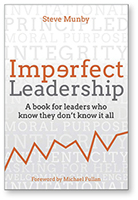 Imperfect Leadership: A book for leaders who know they don’t know it all
Imperfect Leadership: A book for leaders who know they don’t know it all
by Steve Munby, Crown House Publishing, Williston, Vt., 2019, 320 pp., $24.95 hardcover
In
Imperfect Leadership: A book for leaders who know they don’t know it all, Steve Munby provides a first-person account of his experiences as an advisor and inspector prior to moving to leadership as the director of education in Knowsley, England and further serving as the CEO of the National College for School Leadership.
Munby’s account transcends geographical borders and reads as a self-reflection about his time as a leader. Superintendents will recognize the many similar political, social and societal issues that often present a conundrum. Readers may find themselves getting caught up attempting to compare the nuances of England’s education system with the details of the educational system in the United States.
Munby’s experiences illustrate imperfect leadership and provide a lens through which to consider similar situations in the U.S. One theme that consistently emerges and spirals throughout the book is the importance of establishing, building and nurturing relationships. Munby believes in the value of finding a mentor as one navigates the challenges of any new leadership position.
Munby’s reflections are authentic and provide readers with the answers to questions such as, “What went well?” “What did not go so well?” and “What could I have done differently?” He reminds readers that leadership requires risk-taking and moral purpose and that it is a privilege undertaken with the understanding that the positive impact can be far-reaching.
Reviewed by Lisa M. Antunes, Ed.D., superintendent, Hillsborough, N.J.
 The Leader You Want to Be: Five Essential Principles for Bringing Out Your Best Self – Every Day
The Leader You Want to Be: Five Essential Principles for Bringing Out Your Best Self – Every Day
by Amy Jen Su, Harvard Business Review Press, Boston, Mass., 2019, 256 pp., $28 hardcover
Executive leadership coach Amy Jen Su opens
The Leader You Want to Be: Five Essential Principles for Bringing Out Your Best Self – Every Day by describing a reality all leaders will recognize. Some of our days are “Leader A” days: we are productive, inspiring, and confident, bringing our best self to every interaction and feeling “on purpose” and fulfilled. Others are “Leader B” days when meetings go nowhere, decisions are off the mark, and we feel like a lesser version of ourselves.
Su offers the five Ps — Purpose, Process, People, Presence and Peace — as a framework for how leaders can stay grounded, improve the way they lead and have more “Leader A” days. The book reads like an executive coach’s toolbox. Combining Western management theory and Eastern philosophy, it includes a number of tools, tips and frameworks for identifying your purpose, managing your time, practicing self-care, coaching employees, strengthening your executive team, exercising leadership voice, and ultimately leading with greater poise and presence. Because she is an experienced coach, the author’s tools are all highly practical and the reader will certainly find useful strategies to apply immediately.
Particularly helpful was the author’s repeated reminder that although leaders certainly have already developed many strengths, these must be revisited and even relearned as we advance in our careers. Greater scope of responsibility brings added pressures and a different view of the organization. How we communicate, coach, or manage stress from the superintendent’s seat, for example, may look different from how we handled these leadership challenges previously. Every superintendent will find something in this book to reflect on and use to improve themselves, and in turn, those they lead.
Reviewed by Andy Johnsen, superintendent, Lakeside Union School District, San Diego, Calif.
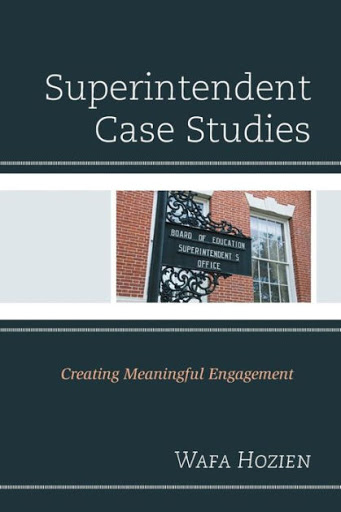 Superintendent Case Studies: Creating Meaningful Engagement
Superintendent Case Studies: Creating Meaningful Engagement
by Wafa Hozien, Roman and Littlefield, Lanham, Md., 2019, 156 pp., $65 hardcover, $32 softcover
Superintendent Case Studies: Creating Meaningful Engagement by Wafa Hozien is designed to stimulate discussion between aspiring administrators who will analyze and discuss the 27 cases included in the book. The dilemmas identified in the book will give school leaders the tools to confront similar issues situations at their schools.
One of the scenarios includes the use of bathroom facilities by LGBTQIA students, and another focused on a day when the principal is confronted with several issues such as a bus transporting students who had a flat tire, smoke coming out of one of the ovens in the cafeteria, the PTA requesting a fund raiser, requests from several school organizations, etc.
All cases are the types of problems school administrators face during their tenure. Data sets are provided in some instances and at the end of each case study is a set of questions to guide discussion and encourage reflection on possible solutions. This book would be more beneficial if suggestions and possible answers were provided at the end of each chapter.
Additionally, some of the discussion questions seem misplaced. For example, one question asks, “What would you have done with the advice the attorney gave?” I believe this question is best answered by lawyers and not by novice educators. Perhaps one way to add to the chapter is to have several administrators provide their responses to the questions at the end of the chapters.
Sometimes there is more than one solution to a problem. Reading responses of veteran superintendents and principals with different answers would enable aspiring leaders to grow and learn a variety of perspectives. The book is certainly worth reading and used in graduate courses, group book reading, aspiring administrators, and by veteran administrators. Educators learn more by the study of case studies and discussion than by reading a textbook.
Reviewed by Paul S. Shaw, Director of Educator Ethics, Georgia Professional Standards Commission
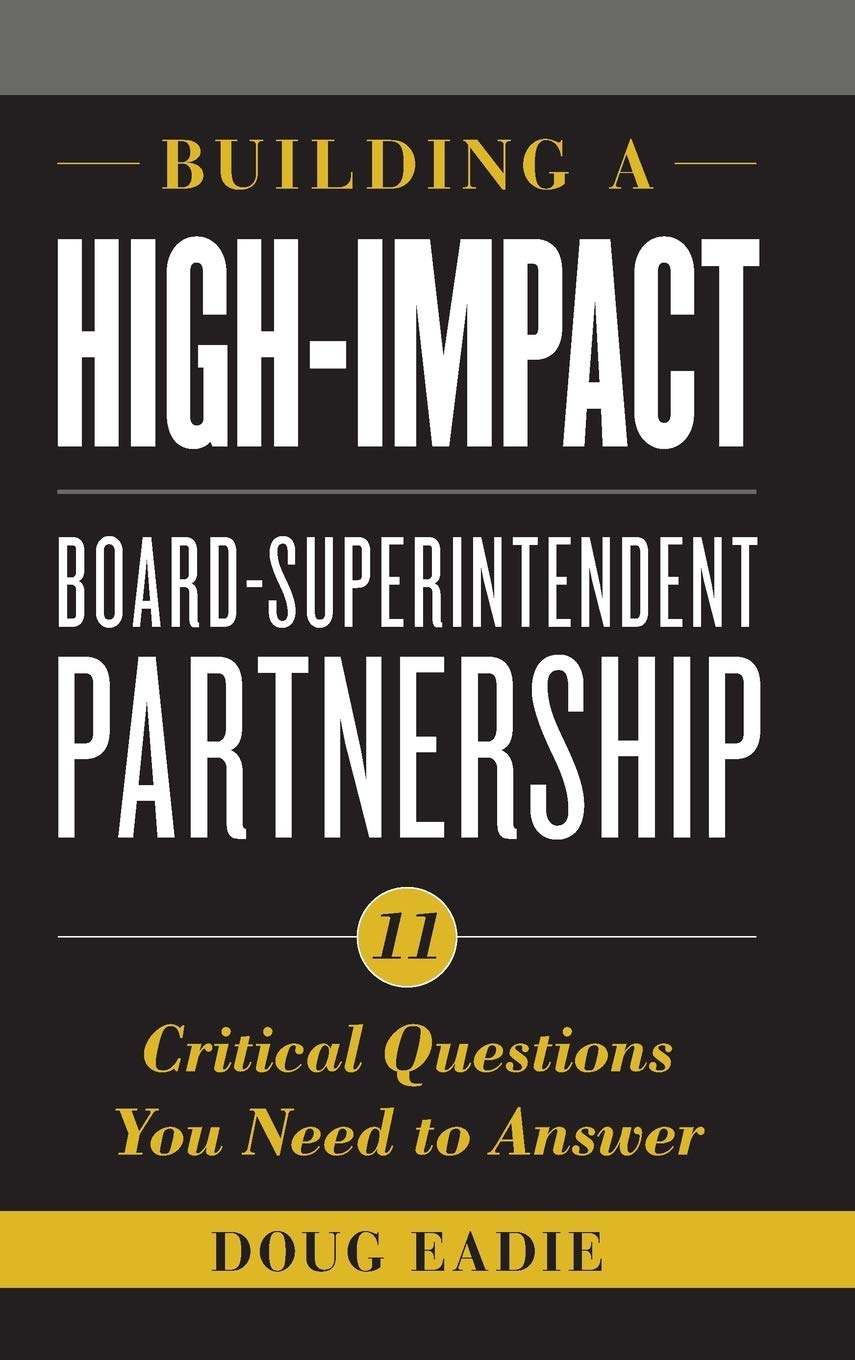 Building a High-Impact Board-Superintendent Partnership: 11 Critical Questions You Need to Answer
Building a High-Impact Board-Superintendent Partnership: 11 Critical Questions You Need to Answer
by Doug Eadie, Rowman & Littlefield, Lanham, Md., 2019, 146 pp., $50 hardcover, $25 softcover
How does a superintendent empower her board by involving its members in leadership decisions while, at the same time, diverting them from micromanaging the district? Such is the premise of Doug Eadie's new book,
Building a High-Impact Board-Superintendent Partnership: 11 Critical Questions You Need to Answer, in which he examines the shift from a board's passive role to a more active engagement in district governance.
The author often cites brief case studies in his book of experiences superintendents have had, both good and bad, when introducing one of his concepts to the reader. This tactic not only lends credibility to Eadie's proposals but allows for the transition from experience to recommended action. Eadie also notes barriers to building a board governing team, most notably when he acknowledges the senior board member who prefers to keep things the way they are.
Recurring throughout the book is the reference to the "board-savvy superintendent." By giving the board the opportunity to focus through service on committees, micromanagement by the board can be, if not avoided, at least minimized. Another key component identified by the author is the importance of involving central office administrators in this endeavor. By developing such a structure, the senior administrators can serve as liaison to the superintendent as well as assisting the board member in facilitating the work of a particular committee. Such an assignment not only fosters trust between the superintendent and her team, but between the administrators and the board.
One of the limitations with Eadie's proposal is board size. In many states, the average school board size is five, making the creation of several committees implausible. His suggestion that the entire board serve on "virtual" committees can be overwhelming and in possible conflict with the open meetings act. Aside from this concern, I would recommend
Building a High-Impact Board-Superintendent Partnership to aspiring and current superintendents. The strategies proposed not only would increase the chance for success in the superintendency but for the school board as well.
Reviewed by Marc Space, retired superintendent and current educational consultant in New Mexico
 Becoming the Educator They Need: Strategies, Mindsets, and Beliefs for Supporting Male Black and Latino Students
Becoming the Educator They Need: Strategies, Mindsets, and Beliefs for Supporting Male Black and Latino Students
by Robert Jackson, ACSD, Alexandria, Va., 2019, 128 pp., $24.95, softcover
Becoming the Educator they Need: Strategies, Mindsets, and Beliefs for Supporting Male Black and Latino Students by Robert Jackson centers around the need for teachers and leaders to be culturally aware in the teaching practices. As the subtitle implies, the focus is on supporting the varied challenges Black and Latino male students face. The author pushes the reader to be self-aware with a keen acknowledgement of his or her own biases and tendencies towards microaggressions. A former teacher and professional athlete, Jackson draws on his own life experiences in an authentic and inspirational manner.
Overall an engaging and insightful read, this book includes the introduction of essential vocabulary needed to understand cultural responsiveness at a deeper level. Beyond racism and implicit bias, this book unveils concepts such as invisibilization, pre-criminalization and colorism — all of which are deeply rooted in the culture of children of color. With each of these barriers, Jackson gives concrete examples in both classroom and real-world contexts.
Although there is an opportunity for much new learning in this book, I also appreciated the reminders of simple core values and beliefs that help shape the mindsets of culturally responsive educators. For example, the reminder to know your “why.” Jackson encourages self-reflection so that novice and veteran teachers will push themselves and stretch their understanding of their purpose.
Another core value that is central to the book is being humble and believing in every child. Jackson writes, “Remove yourself from the center. No one can make you be humble…You will no longer be offended or hurt because you understand that kids are coming in with baggage and…You understand that it’s not about you.” These are excellent pieces of advice to recall when pride rears its ugly head during a challenging encounter.
An enjoyable and easy read, Jackson provides a mix of rich story-telling and evidence-based strategies aimed at improving cultural responsiveness. This book gets to the core of what is needed today in our ever-increasingly diverse schools.
Reviewed by Avis Williams, superintendent, Selma City Schools, Selma, Ala.
Why I Wrote this Book...
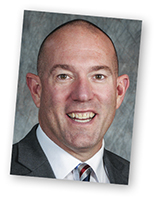 “Whether leading a family, team, school district or company, relationships are the connection that brings leadership and partnerships together. I wrote this book to strengthen relationships, grow and develop leadership skills, and identify and promote partnerships, using stories, examples and practical experiences. The 3 Ships also offers hope and direction to bring anyone’s ship into the harbor, regardless of the crises and challenges they and their crew are facing.”
“Whether leading a family, team, school district or company, relationships are the connection that brings leadership and partnerships together. I wrote this book to strengthen relationships, grow and develop leadership skills, and identify and promote partnerships, using stories, examples and practical experiences. The 3 Ships also offers hope and direction to bring anyone’s ship into the harbor, regardless of the crises and challenges they and their crew are facing.”
Randy L. Russell, superintendent, Freeman School District, Rockford, Wash., and AASA member since 2012, on writing
The 3 Ships: Relationships, Leadership, and Partnerships (Bookbaby, 2020)
Managing Turnover
A new study examined successful succession planning for superintendents in six California school districts with enrollments ranging from 1,000 to 10,000 students.
In this qualitative study, Jennifer Wildman, who received her Ed.D. at Brandman University, looked at recent superintendent transitions through three stages — prepare, pivot, thrive — that were created by the Annie E. Casey Foundation as strategies to help school districts manage turnover and avoid unsettling leadership transitions.
With more than half of California superintendencies expected to turn over in the next three years, Wildman examined the extent that the six districts used each of the stages. The study confirmed that the superintendency is a particularly taxing time for administrators and school boards. She found board members may focus less on strategy during prepare and pivot stages, particularly when they are using an outside search firm.
Further, some board members interviewed felt overwhelmed and some had never before participated in a superintendent search. Some board members felt so taxed they were hesitant to prepare for the next succession, even though superintendent succession planning should be a part of every district’s ongoing plan for senior leadership.
Copies of “Superintendent Transitions: Planning for the Expected” are available from ProQuest at 800-521-0600.
BITS & PIECES
Principal’s Role
Mathematica released two reports, based on the experiences of six urban districts participating in The Wallace Foundation’s Principal Supervisor Initiative, on changing the principal supervisor role.
The first report focuses on the efforts to reshape the principal supervisor role from administrative duties to helping principals improve teaching and learning. The second report compares the supervisor role of those six districts to the role in 48 other urban districts that were not involved with the initiative.
Find the full reports at
www.mathematica.org.
Aligning Support
The Stanford Center for Opportunity Policy in Education has published a paper titled
“Coherent Assistance in Education Improvement: How Foundations Can Help.”
The paper describes a three-year study of an organization created to align the tools and services of three technical assistance organizations in one school district.
District Reopening
The Center on Reinventing Public Education and the Collaborative for Student Success
released a short report that highlights findings from a review of school district reopening and recovery plans from across the nation.
Some key aspects are expectations and resource transparency, connectivity and technology, and support for staff, students and families. The project will continue to evaluate 20 districts through the 2020-21 school year.
Prekindergarten Education
A new report from the Institute of Education Sciences
presents findings about the care and education of prekindergarten-aged children, such as costs of care, months spent in care and factors making it difficult to find childcare.
According to the report, 59 percent of prekindergarten pupils were part of at least a weekly care arrangement.
Vollmer Videos
Jamie Vollmer, author of Schools Cannot Do It Alone, has launched a video series of the same name expressing the concerns facing superintendents and their communities.
The first episode is titled
“The Ever-Increasing Burden on America’s Public Schools (120 years of mandates).”
Postsecondary Students
The National Center for Education Statistics has
provided national data from 2017 on students who began postsecondary education in the 2011-12 school year.
For example, the average total cost of attendance for students was $20,500, and 73.4 percent of students received grant aid. By 2017, 56.2 percent had earned a credential at their respective institutions.
Benchmark Communications
The National School Public Relations Association has released its
2020 School PR and Communications Benchmark report, which looked at how school districts in the U.S. approach school-to-home communications.
The report covers topics such as social media strategy, communication budgets and community engagement strategy.
Family Resources
The American Institutes for Research
released several resources for building positive conditions to help families with learning at home. The resources are available in English and Spanish.
Examples include “How You Can Create an Emotionally Safe Space” and “How You Can Help Your Child Actively Engage in Learning.”
Project Play
The Aspen Institute’s Project Play has launched a multiyear initiative called
Reimagining Sports in America to motivate high schools to make healthy opportunities available to students.
The program’s goal is to create opportunities through clubs, physical education and more. Winning schools will receive a total of $160,000 in awards.
AASA RESOURCES
Leading for Equity
AASA’s weekly Leading for Equity webinars will run each Thursday
through Dec. 9. These sessions identify practices and policies that limit
opportunities for children of color and low-income students and highlight
education leaders who are addressing those practices aggressively with an
equity agenda.
Registration and archived webinars can be found online.
Presidential Candidacy
Candidates for AASA president-elect must submit all required
materials in the Candidate Filing Packet to election coordinator Noelle
Ellerson Ng by 5 p.m. EST on Dec. 4.
A statement of intent also must be submitted to the executive
director of the AASA chartered affiliate of which the candidate is a member
prior to submitting candidacy documents to AASA.
Principal Supervisor Academy
AASA launched a virtual National Principal Supervisor Academy in
August with 63 participants. This yearlong certification program is offered in
partnership with the Center for Educational Leadership at the University of
Washington. Participants learn strategies to identify, recruit, select and
develop principals.
AASA hosts Twitter chats on principal supervision on the third
Thursday of each month at 7 p.m. EST. To participate, search for the
#AASAPrincipalSupervisor hashtag.
Book Reviewing
School Administrator
magazine maintains a corps of book reviewers who have the opportunity to review
two or three new books over the year. Anyone holding AASA membership is
eligible.
If interested in being a reviewer in 2021, contact editor Jay P.Goldman.